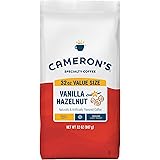Unpacking the Aldi Espresso Machine: Is £60 Enough for True Home Barista Quality?
The quest for exceptional home espresso often conjures images of hefty price tags and complex machinery. Many aspiring baristas face a common dilemma: how to achieve café-quality coffee without breaking the bank. This challenge is frequently met with skepticism, especially when confronted with budget-friendly options. Can a surprisingly affordable machine deliver genuine espresso excellence?
The recent arrival of the £60 Aldi espresso machine, discussed in the video above, presents a fascinating case. It dares to challenge long-held beliefs about espresso equipment costs. For just £59.99, or around $80, this German supermarket giant offers a manual espresso maker. Its incredibly low price point raises crucial questions: can such a machine truly produce good espresso? We delve deeper into its capabilities, limitations, and the nuanced realities of budget home brewing.
The Crucial Role of the Grinder: More Than Just an Accessory
For years, a prevailing wisdom has guided home espresso enthusiasts: the grinder is paramount. Many experts, ourselves included, suggest investing more in a quality grinder than the espresso machine itself. An espresso machine’s fundamental task is straightforward. It heats water to the correct temperature. Then, it pushes this water at pressure. This action forces water through a compacted bed of coffee grounds. The coffee itself does most of the heavy lifting. The grind consistency dictates flow rate and extraction quality.
However, this conventional wisdom faces a stern test. What if the espresso machine costs merely £60? Can even a top-tier grinder compensate for a potentially underperforming brewer? The video highlights this tension. A great grinder cannot fix inherent machine flaws. Yet, it dramatically improves the output. It offers precision in particle size. This control is essential for proper extraction. Without it, even the best machine struggles. The Aldi machine, despite its low cost, leverages a good grinder effectively. This demonstrates the enduring truth of the grinder’s importance.
Understanding Brew Pressure: The 20-Bar Myth
The Aldi machine boasts 1,350 watts of power. This ensures sufficient water heating. It also advertises 20 bars of pressure. Many consumers might view higher bar ratings as superior. However, this is a common misconception in espresso brewing. More bars do not always mean better espresso. In fact, standard espresso extraction typically occurs at 8 to 9 bars of pressure. These lower pressures are optimal for flavour. They prevent over-extraction and bitterness.
Budget machines often use vibration pumps. These pumps are rated for higher pressures, like 15 or 20 bars. They often bleed off excess pressure. This ensures a usable flow to the coffee puck. So, the advertised 20 bars is less about superior brewing. It is more about pump specifications. It is not a “Top Trumps” scenario. More pressure isn’t automatically better. Understanding optimal pressure is key to quality extraction. It helps set realistic expectations for these machines.
The Pressurized Basket Predicament: A Barrier to Quality
Upon inspection, a significant limitation of the Aldi machine emerges. It comes equipped with a pressurized basket. This is a common feature in entry-level machines. Pressurized baskets are designed for pre-ground coffee. This coffee is typically too coarse for true espresso. The basket itself creates resistance. This slows down the water flow. It helps generate a faux crema. This crema is often bubbly and lacks true espresso’s rich texture.
For discerning coffee enthusiasts, a non-pressurized (or “naked”) basket is essential. It allows for genuine control. Grind size becomes critical with a naked basket. It reveals true extraction quality. The video demonstrated how finding a matching, unpressurized basket was crucial. This simple swap unlocked the machine’s true potential. Without it, achieving a truly balanced and well-extracted shot is nearly impossible. Many budget machines require this immediate upgrade.
Unboxing the £60 Espresso Experience: Features and Quirks
For its £60 price tag, the Aldi espresso machine offers several notable features. UK sales tax accounts for approximately £10 of this cost. The machine’s actual value is closer to £50 before tax. The unit includes a portafilter. It has an annoying little “flappy bit.” This prevents the basket from falling out. It lacks a spring-loaded retention system. Both double and single pressurized baskets are included. The single basket is merely a shallower version.
A plastic scoop-tamp tool is also provided. This is widely considered suboptimal for effective tamping. The water tank is a pleasant surprise. It is detachable and easy to fill. The control panel is charming. It features illuminated buttons with little photos. Options include power, espresso, Americano, espresso cool, and steam. The shower head distribution is “not bad.” This is a critical component for even extraction. Its decent performance sets up success for brewing. The machine shows attention to detail despite its low price.
Brewing Espresso: Techniques and Adjustments
Achieving a good shot with the Aldi machine requires careful technique. The speaker used a high-end Zerno Z1 grinder. This $1,500 grinder ensures optimal particle size. A 16-gram dose was used. This fits the basket well. Dosing funnels reduce mess. The provided tamper is “unpleasant.” A separate, quality tamper is a vital upgrade. The machine offers good clearance for a scale and cup. This is a surprising advantage. Many expensive machines lack this convenience.
Initial shots were a bit fast. The Americano button allowed for some shot length control. Crucially, the machine lacks a solenoid valve. A solenoid valve purges residual pressure. It prevents a wet, soupy puck. It also stops further dripping. Without it, shots must be stopped earlier. This accounts for the residual pressure. The puck will remain wet and expand. This is typical for machines under £200. Adapting to this characteristic is essential. It requires understanding the machine’s limitations. Puck preparation is also vital. A needle distribution tool minimizes clumps. This ensures even extraction. These steps contribute to a balanced and well-extracted shot.
Steaming Milk: Unlocking Microfoam Potential
Steaming milk on budget machines often presents a challenge. The Aldi machine’s steam wand is peculiar. It initially appears to be an auto-foaming design. These wands often have a small hole. Air is pulled in to create foam. The video demonstrates purging water from the line. This prevents unwanted dilution. Non-dairy milk was used for testing. The initial auto-frothing attachment proved frustrating. It created flawed texture. Removing this adapter significantly improved results.
Once the adapter was removed, the bare steam wand performed surprisingly well. It generated plenty of steam power. This power effectively churns the milk. It knocks down large bubbles. The result is fine microfoam. This microfoam is essential for latte art. It also enhances drink texture. The length of the wand can be annoying. However, with proper technique, excellent milk texture is achievable. This contributes to a “delicious” milk beverage. The steaming capability far exceeds expectations for a £60 machine.
The True Cost and Longevity Debate: Beyond the Price Tag
While the Aldi espresso machine delivers surprising performance, its true cost extends beyond the £60 sticker price. To make truly delicious espresso, an unpressurized basket is necessary. This adds approximately £20. A proper tamper is also indispensable. This adds another £15-£20. So, the functional cost quickly rises to around £100. This is still remarkably affordable, but important to acknowledge.
A deeper concern surrounds the machine’s longevity and sustainability. Corners must be cut to achieve such a low price point. The speaker expressed doubts about its repairability. He also questioned its expected lifespan. Many good espresso machines can last decades. A £60 machine might only survive its warranty period. This could lead to planned obsolescence. It contributes to landfill waste. Buying a £60 machine annually for five years totals £300. This equals the cost of a higher-end machine. That machine might last 20 years. Consumers must weigh short-term savings against long-term environmental and financial costs. The “cheap” price might hide a higher cost over time.
User Experience and Target Audience: Who is This Machine For?
Despite its impressive output, the daily user experience with the Aldi machine has drawbacks. The machine drips constantly. It creates a messy environment. Knocking out the puck is also “unpleasant.” It lacks the quality of life features of more expensive machines. A solenoid valve, for example, prevents dripping and simplifies puck management. These features enhance the daily ritual of espresso making.
So, who is the ideal audience for this £60 espresso machine? For the casual observer, it might seem like a “toy.” However, for those knowledgeable about coffee, its utility is clear. It caters to budget-conscious enthusiasts. These users understand espresso technique. They are willing to invest in a quality grinder. They accept the machine’s quirks and manual effort. They are also prepared for the potential for a shorter lifespan. It’s an excellent stepping stone for those wanting to explore home espresso. It offers quality results without a huge initial investment in the machine itself. However, it requires a commitment to learn and adapt. This Aldi coffee machine serves a specific niche. It empowers users who prioritize shot quality over luxurious convenience.







